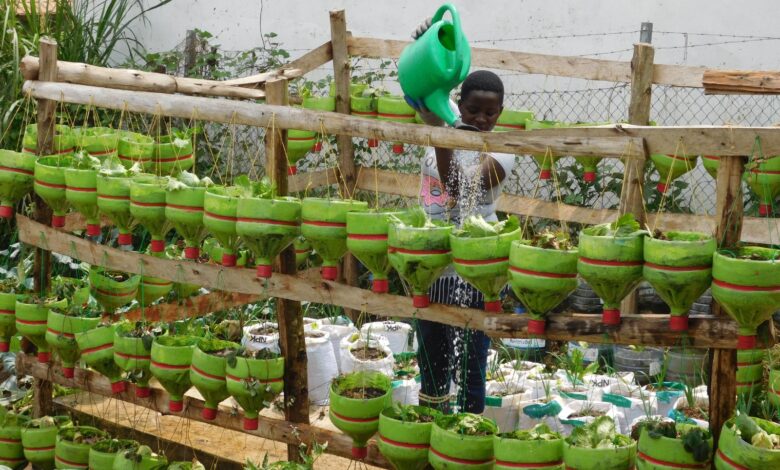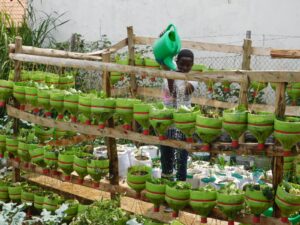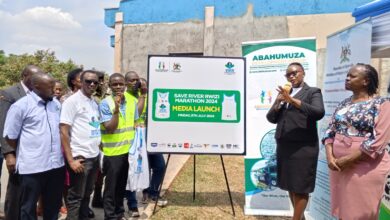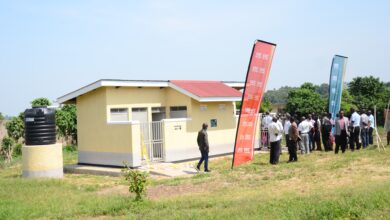
 Kabarole: With its fertile soils and high food production, Kabarole district malnutrition rate still stands above the national average. However, authorities have teamed up to sensitize the population with interventions to help in curbing malnutrition rate in the region.
Kabarole: With its fertile soils and high food production, Kabarole district malnutrition rate still stands above the national average. However, authorities have teamed up to sensitize the population with interventions to help in curbing malnutrition rate in the region.
Benard Bwambale, a nutritionist and dietist at Kabarole Research and Resource Centre, said malnutrition is very high because of people’s mindset which needs to be changed.“Malnutrition rate is very high, not because there is no food but its because people are minding much about money than good feeding for their children. Its really absurd to find a person selling all the food leaving his/her children stunted” Bwambale said. He said to curb the vice, together with all stakeholders, they are in a campaign to end malnutrition among children below the age of five who are the most affected. Health practitioners have taken an initiative to identify all malnourished children who are in villages, taking them to the hospital for management and sensitizing their parents and caregivers on the causes of malnutrition and how to avoid it.
According to Bwambale, some children are stunted because their parents / caretakers don’t feed them on what they are suppose to and others are very poor to the extent that they have failed on their responsibilities. “We have actually managed to take some malnourished children to the hospital and we have always done a follow up to ensure that they are better even when they go back to their homes” he said. He said they are encouraging parents to practice kitchen gardening and also prioritize proper child feeding and ensuring that pregnant mothers receive adequate nutrition.“We now want people to also learn good cooking habits and food preservationn methods. Some people dry food in unsanitary conditions, which is dangerous to their health” Bwambale said.
He added that those owning kitchen gardens need to seek knowledge about safe use of chemicals such as pesticides; practice agro-ecology farming practices and handle food properly to address malnutrition comprehensively. According to health practitioners, malnutrition rate among children below five years is very high in the Kabarole and Rwenzori districts. According to Aggrey Gwaita, a nutritionist at Fort Portal Regional Referral Hospital [FRRH], every Wednesday, they receive between 30 to 50 mothers with malnourished children below five years. “Some come with babies below 2.5kilogrammes and we have been advising them to feed their children on food that is rich in nutrients, but surprisingly some tell us that they don’t have food,” Gwaita said.
He attributed the main cause of malnutrition to poor feeding and diseases such as tuberculosis and HIV/Aids. An increasing number of households in Fort Portal City and Kabarole District have embraced the concept of kitchen gardening to combat malnutrition, which has become a big burden to many households.The residents are planting a variety of food crops, particularly vegetables, in their compounds after health experts expressed concern over the high prevalence of malnutrition among children under the age of 5 in Tooro Sub-region.
According to the latest Uganda Demographic and Health Survey, 40.6 percent of children below five years in the sub-region are stunted, 2.4 percent suffer from wasting, and 10.3 percent are born with a low birth weight of below 2.5kg.Additionally, anaemia affects 45 percent of children below five years and 29.4 percent of women of reproductive age. To address the malnutrition crisis, nutritionists have recommended the cultivation of vegetables, which are rich sources of essential minerals such as calcium, iron and vitamins, which are crucial for children’s growth. In Uganda, malnutrition is a hidden problem because children are moderately as opposed to extremely malnourished. About 2 million under-five children are stunted and 801,000 are underweight. Four out of ten children are critically stunted in western Uganda. However, earlier studies in Kabarole district found that over 40 percent of children below five years of age were stunted. In the 13 refugee settlements and 12 hosting districts analyzed, around 104,440 children were and will likely be acutely malnourished between February 2022 and January 2023, including around 16,540 children severely malnourished and in need
of treatment.
The executive director Spirulina Development Institute,Anthony Ayebare said they are working with government to ensure that malnutrition rate is reduced especially in children. He said they are working to supply spirulina as a food supplement in schools, hospitals and refugee settlements. “We are so far working with five primary schools in Kabarole district, communities and we are soon bringing hospitals and refugee settlements on board,” he said. Ayebare said they are supplying spirulina to the five primary schools in Kabarole district to work as a pilot project. “Our mission is to eliminate hunger and malnutrition in Uganda. Spirulina growing in Uganda is a new thing and people need to embrace it because of its health benefits,” he said. Spirulina is a blue-green microalgae that is incredibly rich in protein and nutrients. It falls into the category of super foods and one of the most powerful sources of nutrients in ancient times.
According to Ayebare spirulina is grown in water and does not come in contact with land. It requires a pool or container which can be placed in a yard or on balcony, windowsill or roof and can be consumed dry or fresh. Spirulina has so many health benefits but most importantly it curbs malnutrition in children and increases immunity in both young and old.





Hello. Thanks for the great article articulating our work. I founded Spirulina Development Institute by funding and instructing all the farm infrastructure and procedural details by searching ‘Uganda Food Security’ on LinkedIn and deciding Anthony was a trustworthy individual to help save lives. I would love to elaborate on a follow-up article exactly how to build a spirulina farm to provide the healthiest, lowest labor, most protein rich, smallest footprint crop I’ve found. You can see the Fort Portal farm I founded as well as the Florida, USA farm I made and work at on my open-source Facebook group How to Grow Spirulina. Hopefully with enough visibility, we can ensure everyone has access to a spirulina farm